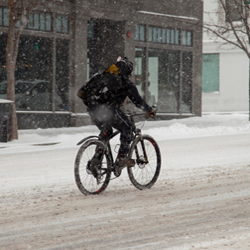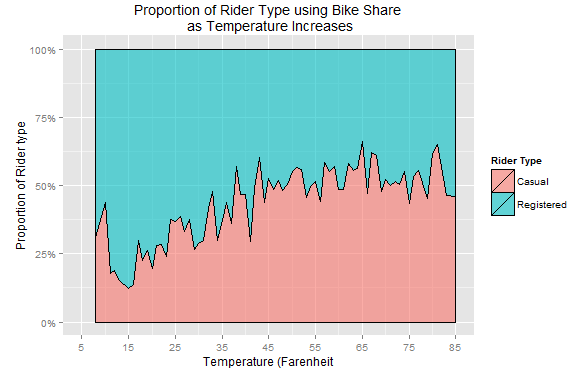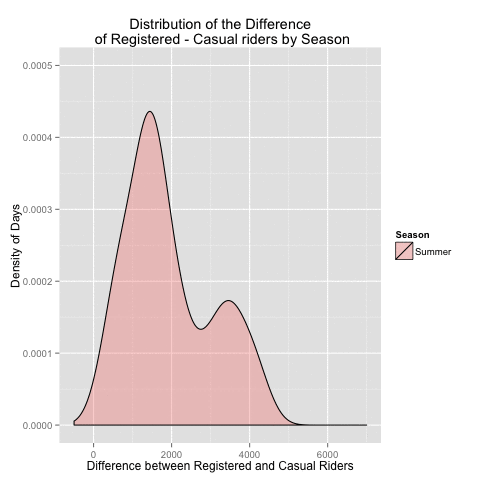
Commuting in the winter months is particularly pleasant, because there aren’t many other riders or pedestrians walking on the bike only north side – clogging up the Manhattan bridge. I notice however that as the temperature dips below 35 degrees or the clouds begin to gather, my friends and co-workers become more reluctant to take their bikes out. This leads to me wonder: am I that much more dedicated?
I did what any reasonable person would do – I looked to the data. I pulled daily ridership data from the first two years of the Washington DC Bike Share program (2011-12). It shows the daily number of cyclists using the Bike Share and how that number fluctuates according to various environmental and seasonal factors. These factors include weather condition, temperature, humidity, windspeed, weekday, holiday, etc… Two rider types of interest for us are the ‘registered’ (monthly/annual contract) and ‘casual’ (1-5 day pass) riders.
Though I ride my own bike (but still fully support Citi Bike – just wear a damn helmet!), I bet that my bike habits are more similar to a registered rider than a casual one.
Right off the bat you might think that temperature is a huge differentiator between registered and casual riders. And it is…kinda.

This chart shows the proportion of registered and casual riders at different temperatures. It’s clear that registered folks are more likely to be riding at colder temperatures.
The only kink? Out of two years of daily temperature data, only 133 days had temperatures under 30 degrees. Not insignificant, but not enough to make it into the model, especially in light of correlations with other weather related variables.
What other weather related variables you ask? What about the season?

The above chart says that in the summer months, the difference between the number of registered and casual riders on a given day is small (check out the x-axis). Conversely, in the colder months, the difference is large – there are more days with large differences. This makes enough of an impact to keep in the model.
Continuing in this manner, it turns out that the strongest indicators1 of the difference in the number of registered vs casual riders on a given day are:
- Season
- Work Day (i.e. non-holiday or weekend)
- Weather (rain, sun, cloud, snow)
- Year of the bike share program
That is, registered riders are more likely to ride than casual riders in the winter, on a working day, in worse weather, and in the second year of the program (compared to the first).
Now comes the time for introspection – could I be a registered rider?
- Compared to the casual riders I know, I bike more in the winter months than the summer months.
- Save for the summer months when I might be doing long weekend rides, commuting to work takes up a majority of my miles (and harrowing mornings).
- Other than in icy conditions, I’ll be on my bike all year – rain or shine.
- Bikes and Bike Shares rock, but sometimes it takes people a while to get there, especially in metropolitan areas. It wasn’t until my second year living in New York that I got my bike. One of the best decisions I’ve ever made.
Hurray, my journey is complete. It appears I could be considered a registered rider!
This article first appeared on Ilan’s Dataman blog.
Footnotes
- 1. Adjusted R^2 = 80%
- You can find my code here.




